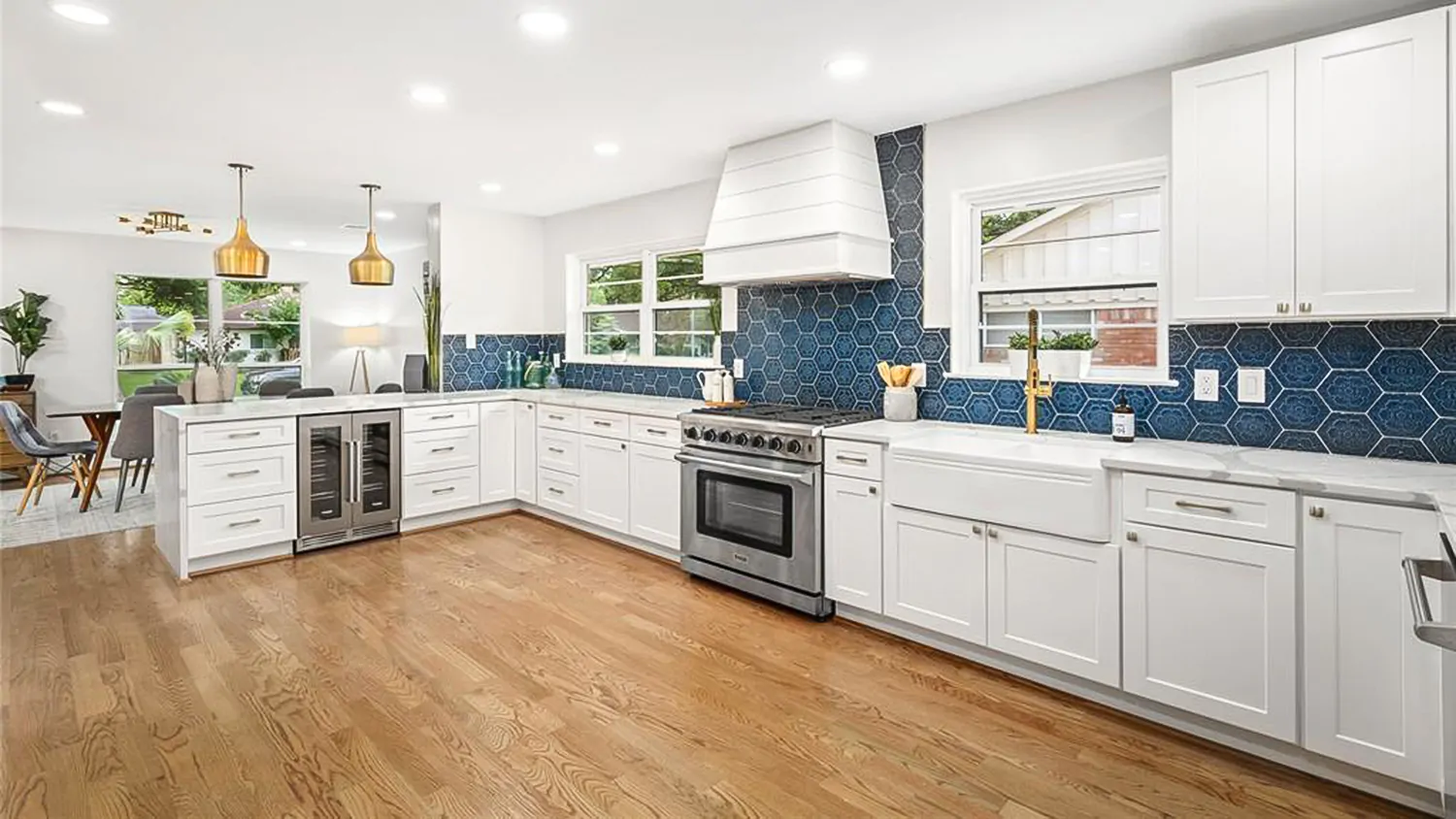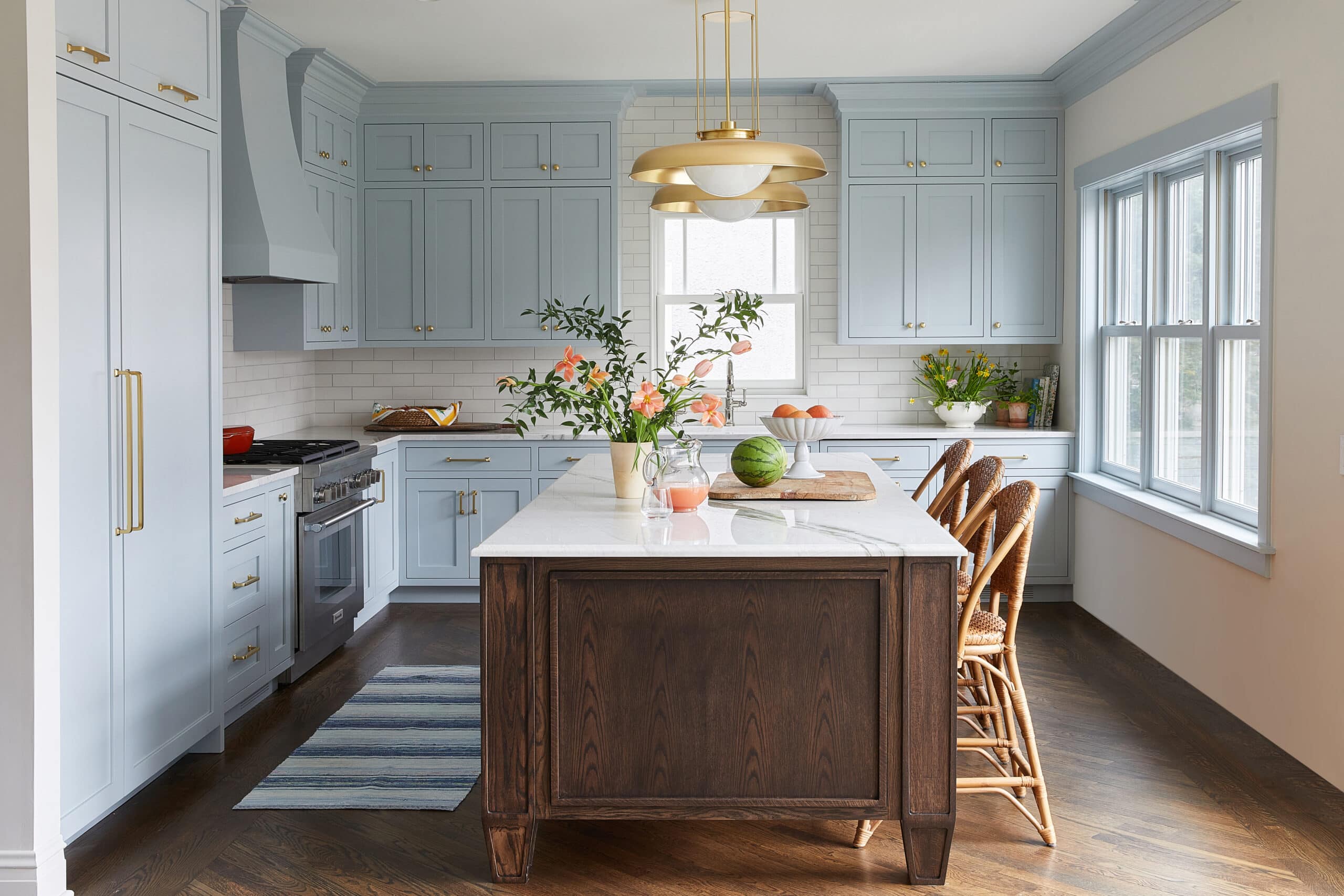The Timeless Appeal of Hardwood Floors and White Cabinets

The combination of hardwood floors and white cabinets has become a classic in kitchen design, consistently captivating homeowners and designers alike. This enduring popularity stems from the visual impact and versatility this pairing offers, creating a space that is both elegant and inviting.
The Visual Impact of Hardwood Floors and White Cabinets
The visual impact of this combination is undeniable. The warm tones of hardwood floors provide a grounding element, creating a sense of comfort and stability. The crispness of white cabinets, on the other hand, adds a touch of sophistication and modernity. This contrast between the warm and cool tones creates a visually appealing balance that is both calming and stimulating.
“The combination of hardwood floors and white cabinets is a classic for a reason. It’s a timeless look that never goes out of style.” – Interior Designer, Sarah Jones
Creating a Sense of Spaciousness and Light
One of the key advantages of this combination is its ability to create a sense of spaciousness and light. The light color of the cabinets reflects light, making the kitchen feel larger and brighter. The natural wood tones of the floors also contribute to this effect, adding warmth and depth to the space.
- Reflecting Light: White cabinets act as a mirror, reflecting light and making the kitchen feel more open and airy.
- Visual Expansion: The lighter color of the cabinets creates a visual illusion of more space, especially in smaller kitchens.
- Warmth and Depth: The natural wood tones of the hardwood floors provide a sense of warmth and depth, adding character to the space.
Examples of Hardwood Floors and White Cabinets in Kitchen Design
The combination of hardwood floors and white cabinets is a versatile design element that can be incorporated into a wide range of kitchen styles. From modern to traditional, this classic pairing can be adapted to suit any aesthetic.
- Modern Kitchen: A sleek, minimalist kitchen with white cabinets and dark hardwood floors can create a sophisticated and modern look.
- Traditional Kitchen: White cabinets with warm wood tones, such as cherry or oak, can create a classic and inviting feel in a traditional kitchen.
- Farmhouse Kitchen: White cabinets paired with rustic hardwood floors can create a charming and welcoming farmhouse aesthetic.
Design Considerations for a Kitchen with Hardwood Floors and White Cabinets

A kitchen with hardwood floors and white cabinets provides a clean and timeless canvas for a variety of design styles. The key is to consider the interplay of these elements to create a cohesive and visually appealing space.
Choosing the Right Hardwood Floor Style
The choice of hardwood flooring can significantly impact the overall aesthetic of your kitchen. Here are some key considerations:
- Light vs. Dark Wood: Light hardwood floors, such as maple or ash, create a sense of spaciousness and brightness, complementing white cabinets by enhancing the airy feel. Darker wood floors, like walnut or cherry, add warmth and sophistication, creating a more dramatic contrast against the white cabinets.
- Wide vs. Narrow Planks: Wide planks tend to create a more contemporary and minimalist feel, while narrow planks provide a classic and traditional look. The size of your kitchen and the desired aesthetic will influence your choice.
Incorporating Contrasting Elements for Visual Interest
Adding contrasting elements can elevate the design of your kitchen and prevent it from appearing too sterile. Consider these options:
- Countertop Materials: Quartz countertops in a dark shade, such as black or gray, provide a striking contrast to the white cabinets and hardwood floors. Alternatively, a natural stone like granite or marble with veining can add warmth and depth.
- Backsplash Designs: A patterned backsplash, like subway tile with a contrasting grout color, can create a focal point and break up the monotony of white cabinets. Consider incorporating metallic accents or a bold color for a statement piece.
Creating a Cohesive Aesthetic with Different Cabinet Styles
White cabinets are versatile and can be integrated into various kitchen styles.
- Traditional Kitchens: Hardwood floors in a medium tone with a satin finish, coupled with white shaker cabinets and brass hardware, create a classic and timeless aesthetic. Adding a patterned backsplash or decorative lighting can enhance the traditional feel.
- Modern Kitchens: Sleek, contemporary white cabinets with minimalist hardware pair beautifully with wide-plank hardwood floors in a light, cool tone. A polished concrete countertop and a simple, geometric backsplash enhance the modern vibe.
- Farmhouse Kitchens: White cabinets with distressed finishes and rustic hardware complement warm hardwood floors in a light tone. A farmhouse sink, open shelving, and a patterned backsplash, such as a classic white subway tile, complete the look.
Styling a Kitchen with Hardwood Floors and White Cabinets

The combination of hardwood floors and white cabinets creates a timeless and elegant backdrop for any kitchen design. This classic pairing offers endless possibilities for personalization and style, allowing you to create a space that reflects your unique taste and needs.
Designing a Functional Kitchen Layout, Kitchen with hardwood floors and white cabinets
A well-designed kitchen layout is essential for maximizing efficiency and ease of use. Consider the following factors when planning your kitchen layout:
- Work Triangle: The work triangle, formed by the sink, stove, and refrigerator, should be a comfortable distance for movement and task completion. The ideal distance for each leg of the triangle is 4 to 6 feet, with a total perimeter of 13 to 26 feet.
- Traffic Flow: Ensure that the layout allows for smooth traffic flow, preventing bottlenecks and congestion, especially in high-traffic areas like the entryway or the island.
- Storage and Functionality: Plan for ample storage space, including cabinets, drawers, and pantries, to keep your kitchen organized and clutter-free. Consider incorporating specialized storage solutions like pull-out shelves, spice racks, and corner cabinets to maximize space utilization.
- Island or Peninsula: An island or peninsula can provide additional workspace, seating, and storage. Ensure that it is positioned strategically to optimize traffic flow and create a sense of openness.
Creating a Mood Board for Color Palettes and Decor
A mood board serves as a visual guide for your kitchen design, showcasing the color palettes, textures, and decor elements you envision. Here are some tips for creating a mood board:
- Color Palette: Start by choosing a color palette that complements the hardwood floors and white cabinets. Consider using a neutral base with pops of color through accent walls, backsplash tiles, and accessories. For example, a white kitchen with light hardwood floors can be enhanced with a muted blue or green accent wall, while a darker hardwood floor might pair well with a bold red or yellow accent.
- Textures and Patterns: Incorporate a variety of textures and patterns to add visual interest and depth. This could include natural elements like woven baskets, wood countertops, and stone backsplashes, or more contemporary options like metallic accents, geometric patterns, and patterned fabrics.
- Decorative Elements: Choose decorative elements that reflect your personal style and add a touch of personality to your kitchen. This could include artwork, plants, decorative bowls, or unique kitchen tools displayed on open shelving.
Selecting Lighting Fixtures
Proper lighting is crucial for creating a functional and aesthetically pleasing kitchen. Consider these tips when choosing lighting fixtures:
- Ambient Lighting: Provide general illumination with overhead lighting, such as recessed lights or a chandelier. Ensure that the lighting is evenly distributed throughout the kitchen, avoiding dark corners.
- Task Lighting: Install task lighting under cabinets or above the stove and sink to provide focused light for food preparation and cleanup. Consider using LED strip lights for a modern and energy-efficient solution.
- Accent Lighting: Highlight specific features, such as a beautiful backsplash or a display of decorative items, with accent lighting. Use pendant lights or track lighting to create visual interest and define different areas within the kitchen.
Kitchen with hardwood floors and white cabinets – The kitchen, with its gleaming white cabinets and warm hardwood floors, felt like a sanctuary. It was a place where I could lose myself in the rhythmic clatter of pots and pans, the fragrant scent of spices, and the quiet hum of the white rotary sewing machine in cabinet that sat tucked away in the corner.
Its presence, a quiet reminder of a different kind of creativity, added a touch of vintage charm to the space, much like the old-fashioned recipe books that lined the shelves. The kitchen, with its mix of modern convenience and nostalgic touches, was a place where I could both nourish my body and feed my soul.
A kitchen with hardwood floors and white cabinets is a classic choice, offering a clean and timeless aesthetic. The real magic happens with the backsplash, though. To find inspiration for the perfect backsplash, consider exploring the myriad of backsplash tile ideas for white cabinets available.
Whether you prefer a subtle, modern look or a bold, statement-making design, the right backsplash can truly elevate your kitchen, creating a space that is both functional and beautiful.
